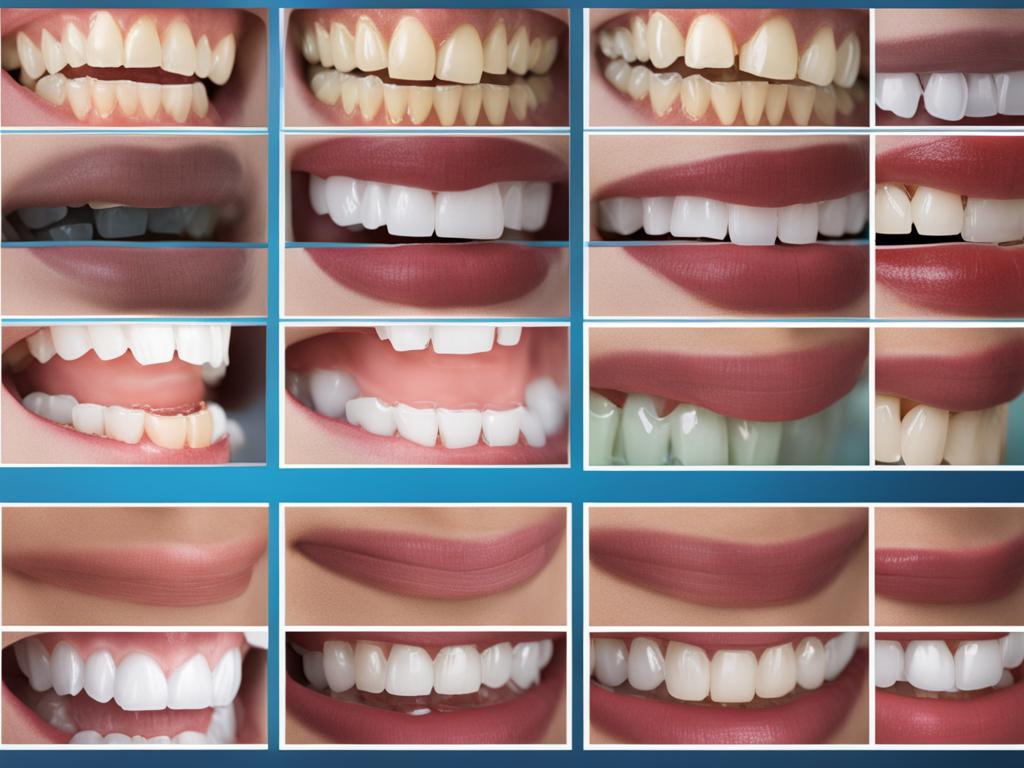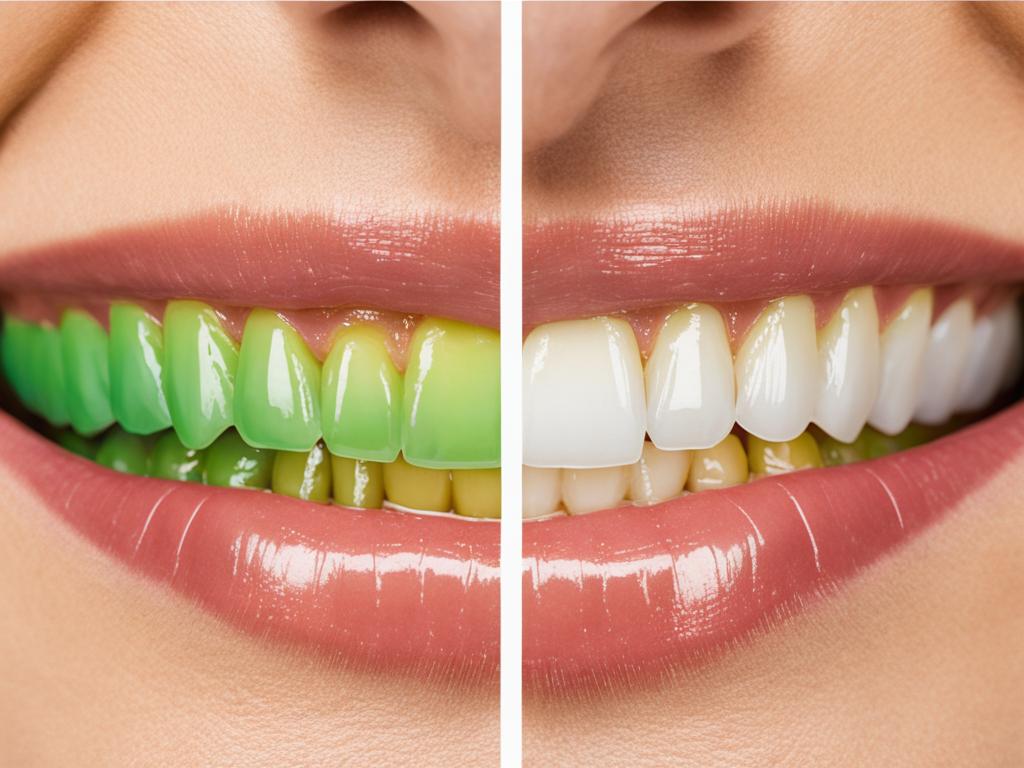Veneers Coverage: Does Insurance Help Pay?
As dental veneers gain popularity for enhancing smiles, patients often find themselves questioning their insurance coverage for such procedures. Veneers generally fall under cosmetic treatments, complicating their eligibility for insurance reimbursement. In this article, we delve into the complexities of standard dental insurance policies and whether they help alleviate the financial burden of acquiring veneers, in addition to examining the varying conditions in which they may offer coverage.
Key Takeaways
- Insurance coverage for veneers depends on whether the procedure is classified as cosmetic or medically necessary.
- Understanding the difference between cosmetic desires and medical necessity is essential for gauging the likelihood of insurance coverage for veneers.
- Insurance plans may provide coverage under certain circumstances, while others might exclude veneers completely.
- Alternative dental treatments, such as crowns and bonding, might be covered by insurance and could also address the patient’s needs.
- A thorough examination of one’s specific insurance plan is crucial in identifying the extent of coverage for dental veneers.
- Insurance policies have variations in deductibles and annual maximums, which may impact out-of-pocket costs for veneers.
- Consulting with dental professionals can help patients navigate the insurance landscape when considering veneers.
Understanding Dental Veneers and Insurance Ambiguities
Dental veneers have become a popular choice to address various dental concerns like discoloration, minor misalignments, or chips. However, their categorization under insurance policies may create confusion and add complexities to the process of obtaining dental insurance coverage for veneers.
Defining Dental Veneers
Dental veneers are thin, custom-made layers made of porcelain or composite materials, designed to adhere to the front surface of teeth. They are predominantly used for cosmetic purposes but can also help protect teeth from further damage. Veneers are generally a safe and effective solution for addressing dental concerns and enhancing the wearer’s smile.
The Grey Area of Cosmetic vs. Medically Necessary Procedures
When it comes to dental insurance and veneer coverage, most plans typically categorize veneers as cosmetic procedures and therefore may not cover the associated costs. Nonetheless, there are instances where dental veneers can be considered medically necessary if they serve a protective role for damaged teeth or improve dental functioning.
In such cases, an insurance company may be more inclined to cover part or all of the cost associated with the veneers. Understanding the distinction between cosmetic desires and medical necessity is crucial in determining the likelihood of receiving dental insurance coverage for veneers.
Medical Necessity: A Gateway for Insurance Coverage
When examining the potential for insurance coverage for dental veneers, the primary factor for consideration is the notion of medical necessity. In this regard, the conditions under which veneers qualify for insurance benefits can vary greatly. Additionally, pre-existing conditions clauses in insurance plans may impact the likelihood of reimbursement for veneers.
Qualifying Conditions for Medically Necessary Veneers
Insurance providers are more inclined to cover veneers if they are deemed medically necessary, rather than for purely cosmetic reasons. For instance, a significantly compromised tooth structure may warrant the use of veneers as a means to prevent further damage, thereby increasing the potential for will my insurance pay for veneers. In contrast, minor cosmetic improvements would generally not qualify for insurance benefits.

Navigating Pre-existing Conditions Clauses
It is essential for both patients and dental practices to be aware of any pre-existing conditions clauses in insurance plans. These clauses can significantly influence the eligibility for veneer coverage, especially if the patient’s dental issue existed before obtaining insurance. Understanding the intricacies of these clauses, along with other policy stipulations, can play a crucial role in determining whether dental veneers insurance reimbursement is plausible.
Policy Nuances: Inclusions and Exclusions for Veneers
With a plethora of dental insurance policies available, it is essential for individuals seeking insurance coverage for dental veneers to thoroughly examine their specific insurance plan. Inclusions and exclusions regarding veneer coverage often vary, stemming from certain considerations like medical necessity or dental repair requirements. Comprehensive evaluations of policy details, quotes, and consultations with insurance representatives can significantly assist individuals in deciphering the extent to which veneers may be covered.
In some cases, dental insurance policies might partially cover veneers if they are deemed essential for dental health, while others may completely exclude them. Procedures classified as “cosmetic” often face exclusions; however, this grey area showcases how crucial understanding policy specifics are when seeking reimbursement for veneers.
- Review your policy details: A thorough investigation of your insurance policy ensures a clear understanding of any applicable coverage, inclusions, and exclusions for dental veneers. This can guide expectations and financial planning for the procedure.
- Consult with an insurance representative: Directly communicating with insurance representatives or using online support services can provide invaluable insights regarding veneer coverage. Real-time clarifications could also uncover policy nuances relevant to your situation.
- Analyze pre-treatment estimates: Pre-treatment estimates can be requested to assess potential coverage and costs prior to committing to the procedure. This proactive approach can illuminate possible financial obligations or limitations associated with the proposed dental veneer treatment.
- Explore in-network providers: Utilizing in-network dentists may bolster your chances of garnering insurance coverage for dental veneers. These relationships often involve negotiated rates and discounts, fostering potential savings for patients.
Policy nuances can ultimately dictate the level of financial assistance available for dental veneers, rendering meticulous scrutiny of insurance coverage plans vital. Diligence in gathering policy-related information and consulting experts can help patients better prepare and manage expectations in regards to their desired dental veneer procedure.
Does Insurance Cover Veneers: Analyzing Alternative Treatments
As dental insurance benefits for veneers can be limited, it is essential to consider alternative treatments that may better align with your insurance coverage. By evaluating less expensive options and understanding insurance preferences for different treatments, you can ensure the most cost-effective solution for your dental needs.

Evaluating Less Expensive Alternatives
Insurance companies often prefer to cover treatments that achieve similar outcomes as veneers but at a lower cost. Some alternatives to veneers include dental crowns, bonding, and composite resin veneers. These options can provide similar enhancements to your smile while being more compatible with dental insurance coverage.
It is essential to work closely with your dentist and insurance provider to explore your options for alternative treatments that may be more affordable and accessible within your insurance plan.
Understanding Insurance Preference for Treatment
Insurance companies thoroughly assess the necessity of specific dental treatments to manage overall costs. As part of this evaluation, they may prioritize more cost-effective options over more expensive procedures, such as veneers. Therefore, it’s crucial to understand your insurance provider’s preferences for various dental treatments.
- Review your insurance policy for information on covered dental treatments
- Discuss your policy and treatment options with a dental professional
- Request a pre-treatment estimate to determine potential insurance coverage
By understanding your insurance provider’s preferences, you can make informed decisions about the most suitable treatment options for your situation.
| Treatment | Benefits | Typical Insurance Coverage |
|---|---|---|
| Dental Veneers | Enhance aesthetic appearance, correct minor imperfections | Limited, depends on medical necessity |
| Dental Crowns | Restore tooth structure, protect damaged teeth | Frequently covered if deemed medically necessary |
| Bonding | Cosmetic improvement, filling in gaps, repairing decayed teeth | Sometimes covered, depending on the reason for treatment |
| Composite Resin Veneers | Less expensive alternative to porcelain veneers, improve cosmetic appearance | Varies, consult with your insurance provider and dentist for specifics |
In conclusion, assessing alternative treatments is crucial when seeking dental insurance benefits for veneers. As coverage can vary greatly depending on your insurance plan, dental needs, and chosen treatment, it’s essential to work with your dental professional and insurance provider to determine the best course of action for your unique situation.
Financial Aspects of Veneer Coverage: Deductibles and Maximums
Even when a dental insurance plan provides coverage for veneers, it is important for policyholders to consider the underlying financial aspects, such as deductibles, copays, and annual maximums. These factors greatly influence the out-of-pocket costs and affordability of veneers.

The Role of Deductibles in Veneer Financing
A deductible is a set amount that policyholders must pay for their dental expenses before their insurance begins to provide coverage. Depending on the plan specifics, deductibles can range significantly, with higher deductibles typically leading to lower premiums. Once the deductible is met, insurance may cover a portion of the cost for veneers. It is crucial to evaluate one’s deductible amount and assess how it will affect the total expenditure for veneer treatment.
Annual Maximums and Their Impact on Veneer Costs
Annual maximums refer to the maximum amount that dental insurance plans will pay for covered treatments within a calendar year. Policyholders must be aware that their insurance might not cover the full cost of veneers if they have already utilized a portion of their annual maximum for other dental procedures. As veneers can be a costly treatment, it is vital to understand these limitations and how they could impact the share of expenses borne by the policyholder and insurance company.
Understanding one’s dental insurance policy specifications—such as deductibles, copays, and annual maximums—can help provide a comprehensive picture of the financial implications when considering veneers. By doing so, individuals can make more informed decisions about their dental care and evaluate whether investing in veneers is a suitable option for their circumstances.
Insurance Plan Types and Out-of-Network Coverage Considerations
Choosing an insurance plan that offers coverage for dental veneers can be challenging, especially when considering out-of-network dental services. Understanding the nuances of different insurance plans, such as Health Maintenance Organizations (HMO) and Preferred Provider Organizations (PPO), is crucial for patients hoping to receive reimbursement for their veneers from out-of-network dentists.
Differences Between HMO and PPO Plans for Veneers

Health Maintenance Organization (HMO) and Preferred Provider Organization (PPO) dental insurance plans differ significantly in their approach to covering procedures performed by out-of-network dentists. HMO plans typically do not provide coverage for dental services rendered outside their network, while PPO plans may offer partial coverage. However, this coverage often comes at a lower rate compared to in-network benefits.
Key differences between HMO and PPO plans:
- HMO plans usually offer lower premiums and reduced out-of-pocket expenses for in-network providers.
- PPO plans offer more flexibility in choosing dental providers, including out-of-network options, but often come with higher premiums and out-of-pocket costs.
- HMO plans typically do not cover any out-of-network dental services, while PPO plans may provide partial coverage.
Strategies for Out-of-Network Veneer Reimbursement
Patients seeking out-of-network services for dental veneers can take several steps to maximize their chances of obtaining reimbursement from their insurance companies:
- Thoroughly review your insurance plan’s policy details, paying close attention to coverage for dental procedures and veneers specifically.
- Contact your insurance provider directly and inquire about their policy on out-of-network services for dental veneers to gain a clear understanding of coverage eligibility.
- Consult with your dentist and get a detailed treatment plan to submit to the insurer for a pre-treatment estimate.
- Leverage services designed to help patients file out-of-network insurance claims, which may increase the likelihood of reimbursement.
While it is essential to evaluate all options when it comes to insurance coverage for dental veneers, patients must be prepared to face higher out-of-pocket expenses if choosing out-of-network services. Familiarizing oneself with the coverage provided under various dental insurance plans, such as HMO and PPO, can help in making an informed decision based on individual needs and preferences.
Dental Insurance Variability: Coverage Level Differences
When evaluating dental insurance options, it is essential to recognize that various plans exhibit significant variability in their coverage design and definitions. In particular, the term medically necessary might differ between insurance providers, which directly impacts veneer insurance coverage. Understanding the specific terms and conditions of one’s dental insurance plan is crucial in gauging the expected level of support for veneer-related expenses.

One notable difference between dental insurance plans is the percentage of costs covered for certain procedures. Some plans may cover a larger portion of the expense for medically necessary veneers, while others could offer minimal or no coverage. Additionally, certain insurance policies might impose waiting periods for specific procedures, even when they are deemed medically necessary.
To effectively navigate the complex world of dental insurance and maximize your veneer coverage, consider the following tips:
- Thoroughly review your dental insurance plan’s benefits, limitations, and definitions related to dental veneers.
- Engage in direct communication with your insurance provider to clarify coverage details for veneers, especially in the context of medical necessity.
- Work closely with your dental professional to determine the most appropriate treatment considering both medical and coverage aspects.
In conclusion, it is essential to understand the specific terms of your dental insurance plan in order to assess your expected level of support for veneer expenses. By reviewing your policy and communicating directly with your provider and dental professional, you can make informed decisions regarding the financial aspects of veneer procedures and ensure that you maximize your insurance benefits.
Proactive Strategies to Find Veneer Coverage

With the complexities surrounding dental insurance and veneer coverage, it’s crucial for patients to be proactive in understanding the extent of their dental plan’s benefits. By taking advantage of available resources and initiatives, patients can get a clearer picture of the projected costs for veneers and make informed decisions. This section examines how critically assessing your dental plan’s Summary of Benefits, and utilizing pre-treatment estimates can help patients find the best possible veneer coverage.
Understanding Your Dental Plan’s Summary of Benefits
The Summary of Benefits is a document provided by your insurance provider that offers a detailed account of your dental plan’s coverage, limitations, and exclusions. By thoroughly reviewing this document, patients can identify if their insurance offers partial or full coverage for veneers under specific conditions. Additionally, patients may use this information to discuss potential coverage scenarios with their insurance representatives or dental professionals. A strong understanding of your dental plan’s Summary of Benefits is a vital first step in determining your veneer coverage eligibility.
Pre-treatment Estimates and Their Benefits
Another useful strategy in clarifying veneer costs is the utilization of pre-treatment estimates offered by insurance providers. Requesting a pre-treatment estimate for your veneer procedure prior to the treatment can help you understand the likely coverage and out-of-pocket expenses dictated by your particular insurance plan.
Pre-treatment estimates typically include the following information:
- Estimated insurance coverage amount
- Required coinsurance or co-payment amount
- Projected remaining deductible to be met
- Remaining annual maximum benefits
By examining pre-treatment estimates, patients can have a clearer picture of the projected costs for dental veneers, allowing them to make informed decisions based on their financial situation and plan coverage.
Consulting with Dental Professionals: Expert Insights on Veneers

When considering veneers and insurance, consulting dental professionals can prove invaluable in helping patients navigate the complexities of insurance coverage for veneer procedures. Dental practices usually have extensive experience in dealing with various insurance providers and can offer guidance based on their expertise.
During multiple consultations, dental offices can provide information on insurance claims for veneers and share insights based on past cases with similar dental issues. These professionals can also discuss partnership arrangements with specific insurance providers, as well as in-house financing opportunities, to assist in making veneers more affordable for patients.
Dental professionals have extensive experience in dealing with insurance claims for veneers and can share valuable insights and advice during consultations.
Moreover, dental professionals can often recommend various discounts they provide, which may further reduce the overall cost of the veneer procedure. They can also suggest suitable alternatives, such as composite bonding or dental crowns, that are more likely to receive insurance coverage.
It is essential to openly discuss your insurance concerns and expectations with your dental professional, as they can guide you through the process and provide tailored advice based on your specific situation. By leveraging the expertise of dental professionals, patients can gain a better understanding of their insurance policy and increase their chances of receiving coverage for veneer procedures.
The table below highlights the key aspects to consider when consulting with dental professionals about veneers and insurance.
| Aspect | Description |
|---|---|
| Experience with insurance claims for veneers | How the dental professional’s experience with resolving insurance claims for veneers can be beneficial in your case. |
| Partnerships with insurance providers | Whether the dental practice has any partnership arrangements with specific insurance providers that might facilitate coverage for veneers. |
| In-house financing opportunities | Available financing options at the dental practice, which can help make the veneer procedure more affordable. |
| Discounts and promotions | Current discounts or promotions offered by the dental practice that can reduce the overall cost of veneers. |
| Alternative treatments | Suitable alternative treatments to veneers that may receive insurance coverage, such as composite bonding or dental crowns. |
By incorporating the insights of dental professionals, those seeking veneers can make more informed decisions and achieve their desired results while maintaining financial stability.
The Reality of Out-of-Pocket Veneer Costs
Even with insurance, dental veneers can remain inaccessible for some individuals, necessitating exploration of alternative options for managing the expense. From seeking more cost-effective materials to inquiring about dental practice payment plans, a host of avenues can help minimize out-of-pocket costs for veneers.
Exploring Payment Plans and Financing Options
Many dental practices offer payment plans and financing options specifically designed for patients seeking veneers who may not receive significant insurance coverage. These strategies may help distribute the costs over several months or years, enabling a more manageable payment structure for cosmetic enhancements.
Investigating Cost-Effective Material Choices
Opting for more affordable materials, such as composite bonding, or seeking alternative treatments like dental crowns can prove cost-effective for those desiring similar results to veneers. Additionally, considering dental school programs as a source for veneers or setting up a dedicated savings plan specifically for the procedure can be viable strategies for those committed to seeking dental veneers, even in the absence of substantial insurance reimbursement.
FAQ
Do insurance companies cover dental veneers?
Dental veneer coverage varies greatly by insurance plan. Veneers are often categorized as cosmetic treatments, which are generally not covered by insurance. However, if veneers are deemed medically necessary to protect a damaged tooth, coverage may be possible.
What qualifies a veneer as medically necessary?
Insurance coverage usually hinges on the aspect of medical necessity. A tooth that is significantly compromised structurally may require veneers to prevent further damage, thus increasing the chance of insurance coverage. Cosmetic desires alone typically do not qualify for insurance coverage.
Will my insurance cover veneers if I visit an out-of-network dentist?
Coverage for veneers by out-of-network dentists varies significantly between HMO and PPO insurance plans. HMO policies typically do not cover procedures done outside their network, while PPO plans may offer partial coverage, which is generally lower than in-network benefits. Understanding your plan’s out-of-network coverage is essential to avoid higher out-of-pocket expenses.
How can I find out if my insurance plan covers veneers?
To determine insurance coverage for veneers, review your policy’s Summary of Benefits or consult with an insurance representative. Utilizing pre-treatment estimates can offer insight into what the insurance company is likely to cover, providing a clearer picture of projected costs for dental veneers.
Are there alternatives to veneers that may be covered by insurance?
Insurance companies might opt for less costly treatments that achieve similar medical outcomes as veneers, such as crowns or bonding. Assessing the necessity of veneers against other treatments is standard practice for insurance providers aiming to manage costs. Patients should investigate alternative treatments that might serve their dental needs while aligning better with insurance coverage provisions.
What can dental professionals do to help patients navigate veneer coverage?
Dental professionals can play a pivotal role in assisting patients with insurance coverage for veneers. Through multiple consultations, dental offices may offer insights based on past experiences with insurance claims for veneers, provide information on partnerships with insurance providers, or share in-house financing opportunities and potential discounts for these cosmetic procedures.
What are some cost-saving alternatives if insurance doesn’t cover veneers?
For individuals for whom veneers remain inaccessible even with insurance, there are additional avenues to explore, such as payment plans, alternative treatments like composite bonding or crowns, and obtaining veneers from dental school programs. Saving specifically for the procedure is another practical strategy for those committed to this cosmetic enhancement without substantial insurance coverage.

